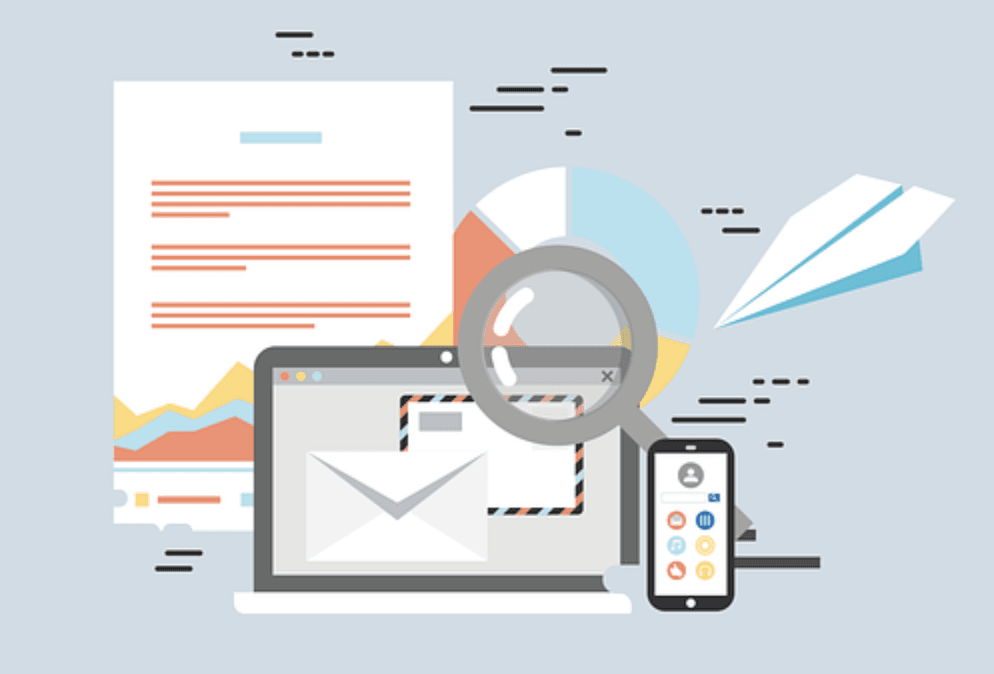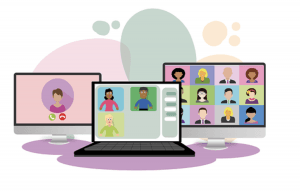For any small business, marketing is about connecting your business' value with the right customer. You want to invest in strategies that enable you to take hold of your market share and increase sales.
As you try out different methods to achieve your goals, it's important to consider the digital marketing space.
Why?
Because B2B buyers start their search online before reaching out physically.
Traditional marketing methods are fin, but incorporating a healthy mix of digital marketing tactics may help you maximize sales in this landscape. Here are five digital marketing strategies small businesses can consider.
1. Facebook Advertising
Nearly 3 million businesses advertise on Facebook. This social network is an inexpensive and highly effective strategy for promoting your business.
Facebook ads are easy to create, run, and test. They offer excellent targeting that allows you to zero in on specific audiences that fit your ideal buyer.
Here's why you should consider Facebook advertising:
• Maximizes reach beyond your Facebook followers. Your business page allows you to connect with followers, but ads expand your reach to the world beyond. Depending on what you pay for, the ads can appear as sponsored content or alongside your target audience’s newsfeed.
• Facebook advertising lets you target prospects (companies) based on their field of industry and location. This can be quite useful when you want to introduce your company to entirely new prospects.
• The ads can help in lead generation by getting your audience to visit your website or sign up for gated content like eBooks, cheatsheets, or reports. addresses in exchange and use them in email campaigns.
• Facebook ads are great for retargeting lost prospects. They may help encourage customers who visited a particular URL to go back and complete the purchase or sign up.
2. Email Marketing

It's exciting to generate leads—whether through Facebook advertising or any other channel. But what do you do with the email address you've collected?
Email marketing provides the perfect platform for you to build a relationship with your audiences, promote your offerings and convert new customers.
It's fast, convenient, low cost, and easily accessible. You can segment your audiences depending on their needs, automate the campaigns, and measure success.
Here are tips to help you maximize email marketing conversions:
• Clean up your email list. You'll have all kinds of people on your list, some who may not be interested in your offerings, and many not open your emails.
• Understand what your audiences are looking for. Part of creating an effective email marketing campaign involves understanding your target audience's needs so you can send relevant information.
• Vary the content. Experiment with different content types. Blog posts are great, but why not consider sending a cheat sheet, hosting a 30-minute webinar, or a Q & A session? You’ll be creating emails that readers want to interact with.
• Study data. Look for patterns. Are there emails that received higher open rates? What was unique about them (content, the form, time sent out, etc).
3. Run Promotions

Both customers and marketers love promotions.
Customers love a bargain because they believe they are getting an awesome deal while marketers appreciate the additional traffic and spike in sales.
From a business perspective, there are three main objectives for running promotions:
• To create awareness about the products/services
• To increase demand for the offerings
• To highlight key differentiators between your offerings and those of your competitors.
Some practices to consider with this strategy include:
• Offer sample products or free demos/trial periods to acquaint prospects with your products/services. By allowing them to test, you'll be nudging them towards making a purchase.
• Design promotional products with your company logo on them like key chains, pens, or mug coasters and "gift" them to potential customers. It will help keep you top of mind long after your initial conversation is over.
• Offer attractive limited-time offers to compel buyers to make purchases. The offers may be discount codes, free shipping, or gifts available for a limited period.
• Have a trade-in program where customers secure discounts when they exchange older models for newer or upgraded versions.
4. Cold Calling


The cold calling strategy has evolved tremendously.
We no longer call strangers and badger them until they give in or hang up.
Today's sales teams call to establish personal connections. The first call is about creating awareness. It's about providing enough valuable information to get listeners to agree to follow conversations.
Here are some tips to make cold calling effective:
• Know your prospect. Research the prospect in advance to pinpoint their motivations, challenges, decision-makers, and how your solutions will benefit them. You can find this information on their website and social pages.
• You typically have about 15 seconds to impress or lose the prospects. Make them count by opening with a pain point framed within a customer-focused story. This often strikes a nerve and you're likely to have their attention.
• Script the first few sentences (your opening line) only. Have a list of questions on hand to help guide the conversation and keep the call sounding natural.
• Show genuine interest in your prospect. Avoid dominating the call, rather encourage your prospect to talk about themselves and their business.
• The first call is about building trust and generating interest—not selling. People rarely ever buy on the first call. Focus on getting them to agree to a meeting where you'll now sell your solutions.
• Understand that rejection will come. Some people are really busy, others can't afford your solutions, and others simply don't want to buy. It's not really a loss—with every call, you're building resilience, sharpening your skills, and learning ways of dealing with “nos.”
5. Run Virtual Events
As the world slowly goes back to in-person meetings and other established routines, virtual events still have a place in business.
These events opened a priceless opportunity for conversations to happen on a global scale only in a cheaper and more comfortable way.
Businesses can create events that suit different customers and prospects. Some audiences prefer hour-long expert panels while others want a 30-minute webinar, etc.
Virtual events provide instant feedback businesses can use to improve future interactions, nurture leads, and make sales.
Some of the more popular virtual events include:
• Webinars. These events are perfect for brand awareness. You can use them to hold discussions, make presentations, or educate audiences. They typically run for 60 to 90 minutes and are available on-demand for audiences.
• Virtual conferences or summits. During these events, audiences chat with you, view keynote speakers in real-time, and ask questions. You can provide valuable content and build the foundation needed for nurturing leads.
• Live streams. Live broadcasts are excellent choices for increasing outreach and maximizing interactions with your audiences. You can also record them and offer them at a later date to your audiences.
• Sales demos. Showing your audiences how your product works helps stimulate interest and dispel concerns over the product's abilities. You can answer questions during the demo and discuss features and benefits that may help drive sales.
As with any other strategy, you'll first need to define the reason why you want to host a virtual event.
Is it to drive sales, educate your audience, or build awareness? Knowing the "why" will help you choose the right event and measure its success when the curtains come down.